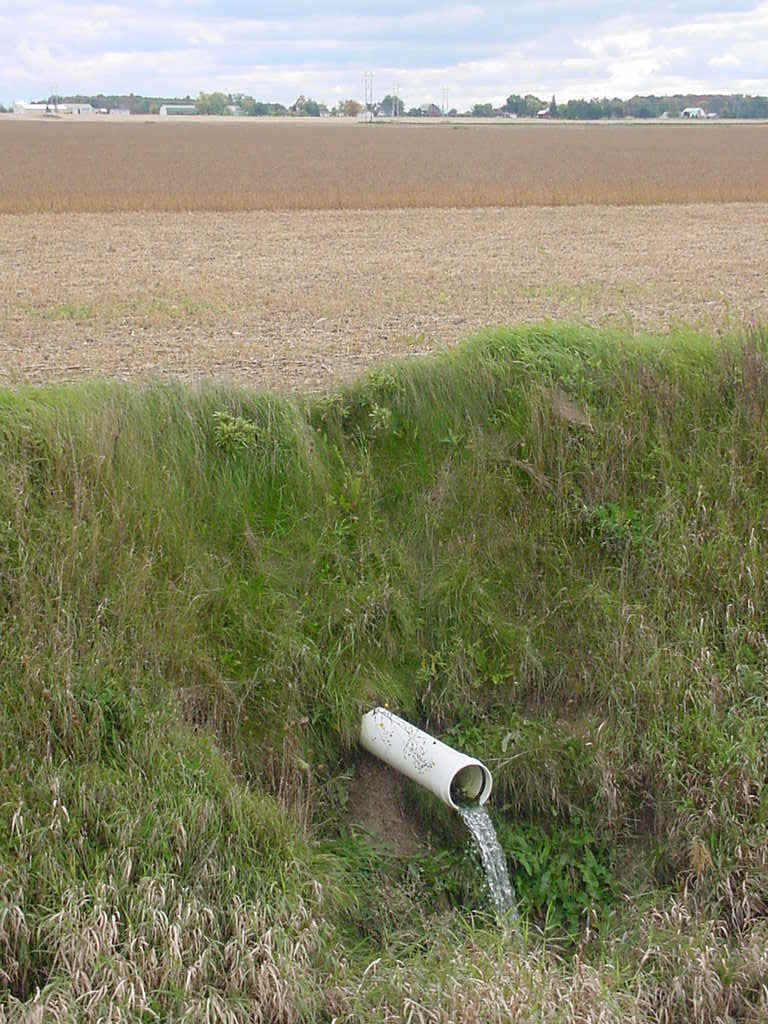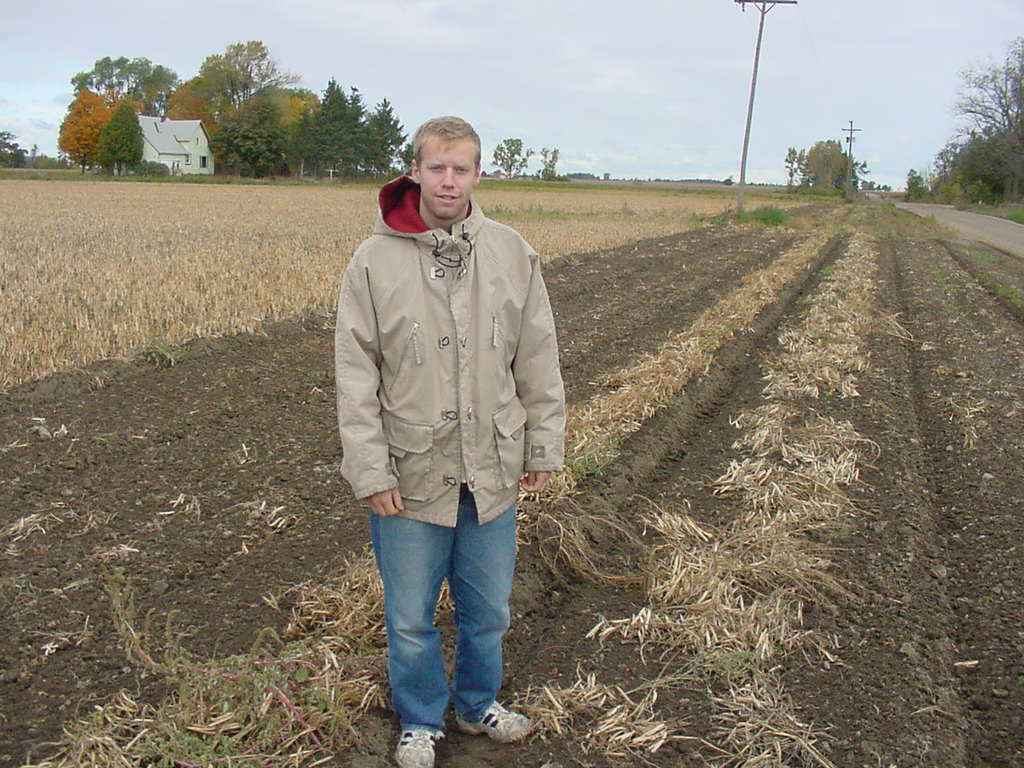MICHIGAN'S "THUMB"
Much of the Thumb area is relatively flat, low-lying lake plain bordering Lake Huron with
elevations ranging from 175 m adjacent to the lake to 320 m in Lapeer County.
Typically, soils range from somewhat poorly to poorly drained loams derived from clay and
silty lacustrine sediments. However, much of Lapeer, Genesee, and southern Tuscola
counties are characterized by medium to coarse-textured soils developed on ground moraine,
end moraines, ice contact features, and outwash sheets. Nonetheless, poorly drained
depressions are common on these landforms. Most of these soils need to be drained by
subsurface tiles (perforated plastic pipe) that help to
lower the water table and make the soils drier.
Original vegetation in Lower Michigan’s Thumb area is difficult to
reconstruct from current information because the contemporary landscape is predominantly
farmland. In some counties, nearly 90% of total acreage is cleared of forest and what
little woodland remains is much modified by human induced disturbances, including
devastating and widespread late 19th century wildfires, cutting, grazing within
woodlots, and soil drainage for improved agriculture. As a result, nearly all woodlands
are disturbed or second growth.
Analyses used in a 1997 study by Dodge (in the Michigan Academician,
Volume 29; some of the text on this page is paraphrased from that report) provide a
reasonable approximation of original forest patterns in the Thumb. A key finding of
Dodge’s study is that much of the northern Thumb was characterized by hemlock forest.
Results of his work also show that mixed hardwood-conifer forest and swamps of cedar,
balsam fir, and tamarack existed in the northern Thumb in the late 1700's.
Today, much of the thumb is farmed to row crop agriculture, such as dry beans, sugar beets, and corn. This type of activity is facilitated by broad, flat
expanses of fertile soils.

This material has been compiled for educational use only, and may not be reproduced without permission. One copy may be printed for personal use. Please contact Randall Schaetzl (soils@msu.edu) for more information or permissions.